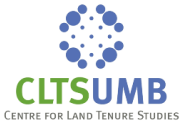No 7/13: Input subsidies and improved maize varieties in Malawi: -What can we learn from the impacts in a drought year?
Stein Holden () and Julius Mangisoni
Additional contact information
Stein Holden: Centre for Land Tenure Studies, Norwegian University of Life Sciences, Postal: Centre for Land Tenure Studies, Norwegian University of Life Sciences, P.O. Box 5003, NO-1432 Aas, Norway
Julius Mangisoni: Centre for Land Tenure Studies, Norwegian University of Life Sciences, Postal: Centre for Land Tenure Studies, Norwegian University of Life Sciences, P.O. Box 5003, NO-1432 Aas, Norway
Abstract: After six years with a large scale Farm Input Subsidy Program that enhanced national and household food security high costs resulted in a cut-back of the program in 2011/12 at the same time as the country was hit by a more serious drought in form of a dry spell in the rainy season. This study used household and farm plot level data combined with choice experiments to assess the impacts of the cut-back of the program and the drought on maize production and the performance of different maize varieties. The demand for improved maize seeds and adoption constraints were investigated and so was the knowledge and use of conservation technologies that in recent years have been introduced by a national level extension program. One of the effects of the cut-back is that the standard package is split and shared by two or more households. The drought resulted in a reduction in maize yields of 400 kg/ha. Many of the most commonly used hybrid maize varieties performed significantly better than local maize with yields about 600 kg/ha higher than local maize. About 4.3% of the maize plots were planted with the new ZM523 drought tolerant maize variety but it did not perform better than the hybrid maize varieties and has not yet become one of the popular varieties that are in high demand. About 35% of the households stated that they failed to obtain the most preferred maize variety and these were among the most commonly grown varieties, showing that there is scope for increased adoption of such varieties. Cash constraints and high prices for improved maize and fertilizer are limiting adoption, however, and continue to be a challenge for sustainable intensification of the maize-based production system. Newly introduced conservation technologies appear promising as one way to reduce the vulnerability to drought and enhance the fertilizer use efficiency.
Keywords: Improved maize varieties; drought; drought tolerance; input subsidies; leakage of input subsidies; targeting of subsidies; maize yields; conservation technologies; demand for maize seeds
54 pages, First version: June 7, 2013. Revised: October 10, 2019.
Full text files
40185Full text
Questions (including download problems) about the papers in this series should be directed to Sarah Ephrida Tione ()
Report other problems with accessing this service to Sune Karlsson ().
RePEc:hhs:nlsclt:2013_007This page generated on 2024-09-13 22:16:27.

